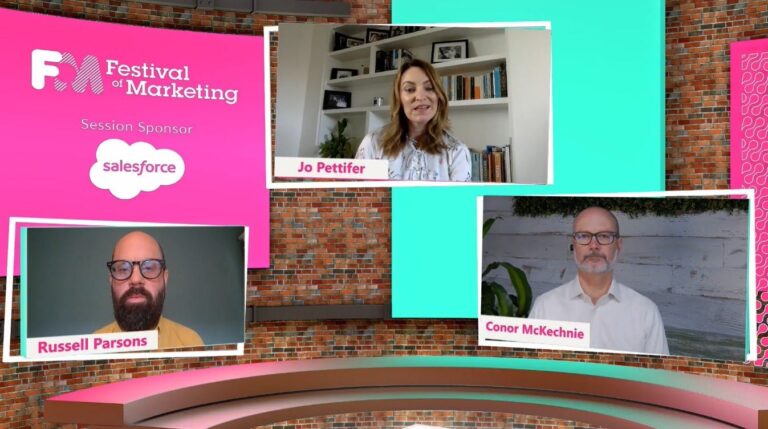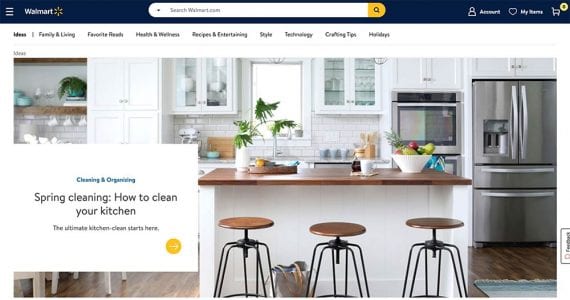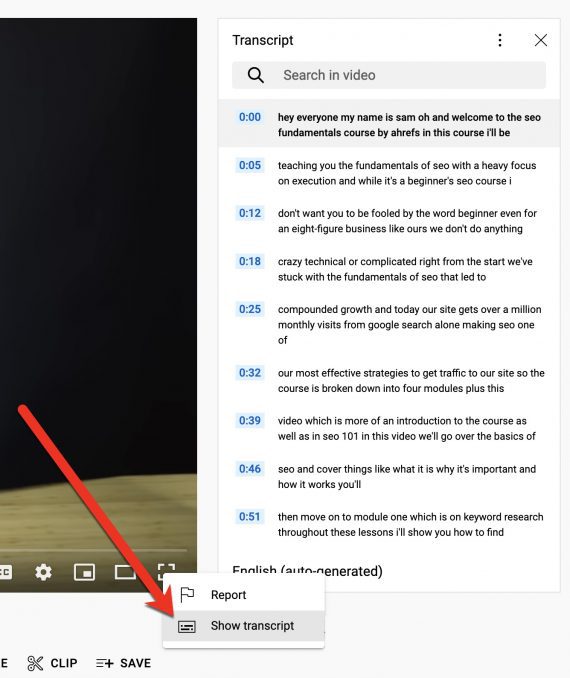Your regular email A/B testing strategy should include:
Email Deliverability 101: What is it and why should you care?
You’re not limited to sending a single welcome email either. Mailchimp recently found that sending a series of welcome emails yielded 51% more revenue than sending a single email.
Because consumer shopping trends to increase over the holiday season, holiday promotion emails can be incredibly effective at increasing sales.
It’s important to know that an abandoned cart isn’t bad news, it actually means that a potential customer is at the very end of the finish line, you just need to help them over with the right abandoned cart campaign.
Jump to a Section
1. What Is Email Marketing?
2. Email Marketing Goals: How to Define and Measure
3. Selecting the Right Email Service Provider (ESP)
4. The Four Essential Email Campaigns
5. How to Grow Your Email List
6. Email Design Best Practices
7. Email Testing Best Practices
8. Email Personalization
9. Email Marketing Regulations: GDPR, CCPA
1. What Is Email Marketing?
“Today over 50% of the top 1,000 online retailers are using text message marketing, but that doesn’t mean they are neglecting email and their other channels of marketing. While they seem similar, it’s important to build thoughtful email and text messaging programs that create a cohesive and personalized experience for your subscribers.” CRM & Email Marketing Predictions for 2020 “In our industry, we talk about email A/B testing so frequently that we assume all email marketers are executing them. The truth is only 31% of brands test a majority of their emails and 39% don’t test their emails at all.”
- A successful email marketing program can be the most cost-effective channel for your business by reaching engaged subscribers with highly personalized messages directly in their inbox
- Well-executed email campaigns enable you to create a correspondence with your customers rather than bombarding them with ads
- Newsletters built around curated audiences means your campaigns are more likely to be marketed to consumers who actually want them
- Beyond communication, email marketing is also a powerful tool for acquiring and retaining customers
Want to know how to design emails that convert? Learn more with Anatomy of An Email: Email Template Design Best Practices.
2. Email Marketing Goals: How to Define and Measure
The Case for Email Cadence
Purium Increases Calendar Campaign Revenue by +269%
- Building and increase web traffic: email campaigns and newsletters are great ways to drive traffic to your website, blogs, or whatever specified content of the email’s sender.
- Acquiring customers: email marketing allows you to build a database of consumers who voluntarily give out their information, based on interest in your specific brand.
- Promote sales and outreach: whether indirectly or directly, some people do not mind having personalized emails sent to them, regarding discounts, new products, or new developments.
- Retain loyal customers and reward loyalty: a regular newsletter can keep your brand top-of-mind for a consumer. In all of your efforts, try to stay as close to the customer as possible in and beyond acquiring transactions.
- Increase your brand presence: Whether directly or indirectly, the way your company markets with email will be a reflection of your brand. The entire end-to-end experience is shaped by all customer touchpoints and interactions.
- Improve database quality: When properly collecting data from consumers, that data becomes an asset of your business, which can help you better understand your buyers. Just be sure you are up-to-date on all email and customer data storage regulations.
- Marketing automation: Scale your marketing efforts with strategies such as personalization, leveraging CRM data to further segment your subscribers, and setting up priority triggers that launch drip campaigns based on customer engagement with your digital assets.
Email Marketing Metrics to Measure Success
“To maintain compliance, brands must tailor their data collection and use to the specific countries in which they operate or where their customers might reside. In general, adopting the highest standards across the board is your best bet to stay ahead of new legislation pending across several states.”
- Bounce rate: percentage of total emails sent that could not be successfully delivered.
- Open rate: percentage of total emails sent that were opened.
- Clickthrough rate: percentage of recipients who click on one or more links in an email.
- Conversion rate: percentage of email recipients who open the email, click a link, and complete the intended action, such as downloading a piece of content or making a purchase.
- Unsubscribe rate: the number of people who unsubscribe from your email list after receiving any given email.
- List growth rate: The rate at which people enter your email list.
- Email share rate: the number of people who forward your email.
- Sender score/reputation: the likeliness that an email provider will block your email, deliver it, or mark it as spam.
Your email service provider is the foundation for your email advertising program. Creating campaigns, triggers, and tracking email performance would be impossible without a dedicated ESP.
3. Selecting the Right Email Service Provider (ESP)
This email gives the customer a sense of who you are and what your company is doing―think of it as you introducing yourself to the customer.
Tinuiti Email Marketing Case Studies:
Should you use Klaviyo? Mailchimp? Or another? It all depends on your priorities and budget.
The most common first interaction with a potential customer is the welcome newsletter.
While mainly affecting Europe and California, GDPR and CCPA (respectively) are essentially motions that standardize data protection, enforcing strict guidelines on how companies use and store personally identifiable information.
Bryan Anthonys Partners with Tinuiti to Increase Email Marketing Revenue 1,027%
This means that companies are losing out on a significant amount of sales―luckily, this is a problem that’s easily remedied.
Email newsletters allow customers a way to offer information about themselves to a brand they trust, so it’s important not to betray that trust. Using email surveys for customer insights and quizzes allows you to gather customer feedback, but it’s important to use that knowledge responsibly and adhere to email marketing best practices.
Consider SMS Capabilities For Advanced Cross-channel Tactics
It’s estimated that as many as 80% of carts are abandoned before purchase.
Two Blind Brothers Increases Revenue 16x
— Peter Inthirakoth, Senior CRM & Email Strategist at Tinuiti
Finally, you must make sure your email data is up-to-date and compliant. Defining the information you’re collecting and setting standards for how the information in your email database will be used will help to ensure your practices are compliant with applicable laws, and build trust with your subscribers, helping to drive CRM customer retention. Here are our top tips to maintain a clean and usable email database in an age of increasing privacy regulations.
The more you can segment your email lists, the more personalized and relevant your messaging will be for your audience.
The more you can segment your email lists, the more personalized and relevant your messaging will be for your audience.
If an email is difficult to read or unpleasant to the eye, chances are it’s going to end up in the trash. To avoid this, use designs that are clean and simple.
6. Email Design Best Practices
The Next Three: Email Triggers To Set Up After Welcome, Browse, and Cart
While you may be able to skirt the rules of GDPR or CCPA based on geography, you won’t be able to for much longer. It’s very likely that the US will have some form of GDPR in the next five years. As a marketing leader, it’s your job to adapt now, because privacy regulations aren’t going away.
“You can use pop-ups and website messaging in every stage of your marketing funnel to create highly targeted and refined customer journey touchpoints that capture and convert leads faster than ever before,” says Jenna Ochoa of Justuno.
Here are a few examples of basic email segments to consider:
- Using bold, straight lines and white space will give your emails an airy, spacious feel while simultaneously making it easier to find the most important parts of your email. Then you can highlight or even animate certain features or use optimized PNGs to make them stand out even more.
- Branding should remain consistent throughout all marketing channels―that includes email. Any email campaigns that you launch should carry your company’s branding elements, including logos, color scheme, and design.
- Consumers don’t like to be shocked, which is why it’s important to make sure that your email design stays consistent. Otherwise, your customers may be turned off or not even recognize your emails.
- Don’t be afraid to switch up your creative. Experimenting with your design can lead to innovative designs that might even outperform your initial creative. Just make sure to test them out on a small segment of users, before sending to your entire mailing list.
When testing out the various factors in your emails, it’s important to have set KPIs so that you can measure performance and identify what’s working and what’s not.
Most of your customers aren’t checking out your website every day. ― Jenny Tran, CRM & Email Strategist at Tinuiti
7. Email Testing Best Practices
As one of the few owned media channels, marketers have more control over the content and reach of their email marketing campaigns, making it a vital component of any brand’s acquisition and retention marketing mix.
You can also download our guide, Better Together: Email & SMS Marketing, for a comprehensive how-to on using email & SMS marketing together to increase customer engagement.
Building an email marketing program can accelerate your customer relationships, improve your brand messaging, and drive cost-effective revenue for your business.
When it comes to testing your emails, there’s nothing off-limits―everything should be tested. Most of today’s major ESPs include features that make it easier to run A/B tests and track results to find the winning variation.
With its unbeatable ROI, it’s no wonder email has been able to stand the test of time. Email remains strong in the era of social media and the smartphone. It enhances the mobile experience, proving to be a powerful complement to emerging communication channels.
While email campaigns vary from company to company, there are a certain few that are universal no matter what your product or service.
- Copy
- Imagery
- Send times
- CTAs
- Subject lines
- Product offerings
On top of that, tracking the results of product promotion campaigns can give you valuable insights about customer preference and shopping habits.
8. Email Personalization
Use these email marketing best practices to create email campaigns that are both appealing and increase conversions.
Especially with GDPR and CCPA legislation that requires abiding by a framework for collecting and using user data.
For more on growing, optimizing, and cleaning your email list, check out 7 Ways to Build Your Email List Into a Marketing Powerhouse.
— Sammi Nutsongtat, Klaviyo Design Specialist Case study: learn more how Cuts Clothing increased their email revenue by 147%
Because email is such a personal channel, privacy should also be top of mind as an email marketer.
9. Email Marketing Regulations: GDPR, CCPA
– Kevin Charette, Marketing Operations Manager at Heap
If you send over 10,000 emails and you don’t track anything, did you really send them? If you are not processing analytics, how do you know whether or not your email marketing campaigns are actually performing, and getting results?
It’s simply impossible without email marketing analytics. Before you launch a new campaign, make sure to set KPIs for yourself and your team each time you launch a new email marketing campaign. Doing so will make sure you are able to track your wins, improving your overall strategy in the long-run.
Here are some of the best email KPIs to track to measure your email marketing success:
Email marketing is constantly evolving, which means your email strategy should be as well.
For a full list of essential email campaigns and sequences, check out The 8 Email Campaigns Your Business Absolutely Needs In 2020.
“Understanding your must-haves and nice-to-haves beforehand undertaking an ESP review will inform your decision-making process and ensure that the option you select will support minimum viability for your marketing needs. Picking the right ESP will give your email marketing program the tools to grow and succeed.”
Though these are some of the most important email marketing metrics, there are others. Want to learn more about how to accurately measure your email campaigns? Read our latest in-depth article on email marketing analytics here.
With virtually every ecommerce site, social media platform, and digital application requiring an email address for sign-up, email isn’t going anywhere anytime soon.
Build Your Foundation for Email Marketing Success
Diagnosing Low Open Rates in Your Email Program
Source: Klaviyo Email marketing is the use of email to build customer relationships and promote products or services of a business.
From there, you can segment your customers by different criteria that will make your emails more personalized to generate greater engagement.
Ready to learn more about email marketing?
Your best results will come from regular email testing, measuring, and optimizing to find what works with your audiences. Here some reasons why every business should have an email marketing program:
Always remember: these regulations are intended to safeguard consumer data. And, since we’re all consumers, this benefits everyone.
“This gives you visibility on how users are interacting with your website and product pages to understand how to personalize the emails you’re sending out.”
This means that if you have a sale or promotion going on, they’re probably not going to know about it unless you reach out.
“The goal of your email design is to reduce the cognitive load. You want your emails to be clean and concise.”
Email advertising is fluid and changing, which means you can’t just set it and forget it.
For more on email personalization, check out The Ultimate Guide to Email Personalization.



![What’s New With MobiusX [Release Notes – Q3 2021]](https://research-institute.org/wp-content/uploads/2021/04/what-to-know-before-you-sell-your-small-business-768x432.png)

